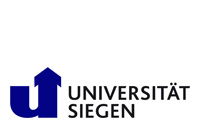
News
DAAD German Academic Exchange Service
B2 Material detection in the THz range
Project Leader
Prof. Dr. Volker Blanz, Prof. Dr.-Ing. Peter Haring Bolívar, Jun.-Prof. Dr.-Ing. Marcin Grzegorzek
Initial Situation
Using time-discrete techniques based on femtosecond lasers, THz images with a high information content can be obtained, as the complete depth information and the spectral information is available for each 2D/3D image element. However, the way in which current systems are able to extract abstract information (e.g. the chemical composition) from these raw data is not sufficiently efficient. Most of the THz recognition approaches are based on the basic analysis of typically only three spectral components. Accordingly, there is an urgent demand for the development of better image processing techniques in the THz frequency range.
Objectives and Work Plan
In this subproject, candidates will develop and investigate algorithms which, on one hand, provide the ability to recognize a material within each image element, and which, on the other hand, allow an object recognition based on the combined data of the THz image. For the analysis of the chemical composition of a probe, approaches known from the field of machine vision will be applied to learn characteristic attributes from the THz spectral um of training data, and to systematically verifying them within new test data.
Current approaches in computer vision, like e.g. PCA/ICA, AdaBoost or support vector machines, will be generalized to spectral data in order to detect multi-modal attributes. The learning-based material recognition is highly depending on the chosen data representation in the form of attribute vectors.

